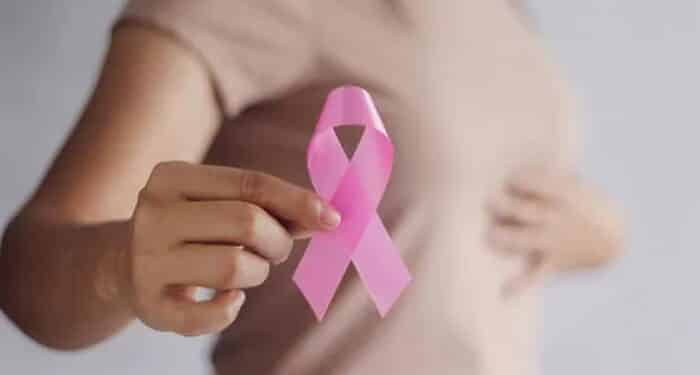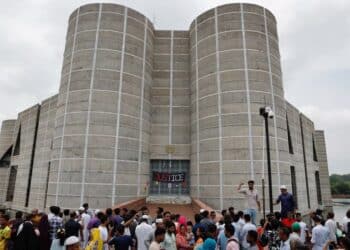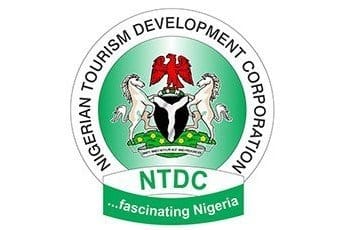Breast cancer is most often associated with having a breast lump. However, your symptoms may vary depending on your specific type of breast cancer. While it’s true that many breast cancer patients have a lump, not all of them will. So it’s important to know the other signs and symptoms.
In general, the body produces certain warning signs. The most common is the breast lump, which may be located anywhere along your chest wall to under your armpit. You may have nipple bleeding or discharge, as well as related pain. There may be redness and/or swelling in any area of the breast or in one breast and not the other, and your nipple could look flatter or caved in.
Having some of these symptoms or breast changes doesn’t necessarily mean you have breast cancer. Many other factors go into a diagnosis, not just outward signs.
Early detection of breast cancer is key when it comes to breast cancer treatment options. If you have concerns with any new changes in your breasts, ask your doctor to review your symptoms and determine whether there’s a need for further evaluation.
Meanwhile, a painless lump in the breast is usually the first sign of breast cancer, though you may not feel it yourself. Instead, many lumps are detected by a routine screening mammogram. In fact, at the time of diagnosis, most women don’t have any apparent signs of breast cancer. When the tumour is small in the early stages of breast cancer, it’s barely noticeable to the touch or the naked eye. That’s why mammograms play an important role.
Mammograms (low-dose X-rays of the breast) may help detect a tumour in the breast long before it’s big enough to start causing symptoms and when the cancer is likely to be more easily treatable. Tumours may be as small as the tip of a pencil (1 mm) or as big as a lime (50 mm). Mammograms are designed to spot tumours on the smaller end of the spectrum when they can’t yet be seen or felt. Regular mammograms are the most reliable way to catch breast cancer early, according to the American Cancer Society. But mammograms on their own can’t catch every case of breast cancer, which is why it’s important to pay attention to changes in your breasts, because you know your body best.
Symptoms of breast tumours vary from person to person. Some common, early warning signs of breast cancer include:
- Skin changes, such as swelling, redness, or other visible differences in one or both breasts
- An increase in size or change in the shape of the breast(s)
- Changes in the appearance of one or both nipples
- Nipple discharge other than breast milk
- General pain in/on any part of the breast
- Lumps or nodes felt on or inside of the breast
Early warning signs of invasive breast cancer
Symptoms more specific to invasive breast cancer are:
- Irritated or itchy breasts
- Change in breast colour
- Increase in breast size or shape (over a short period of time)
- Changes in touch (may feel hard, tender or warm)
- Peeling or flaking of the nipple skin
- A breast lump or thickening
- Redness or pitting of the breast skin (like the skin of an orange)
- It’s important to remember that other, benign conditions may have caused these changes. For example,
- changes to the skin texture on the breast may be caused by a skin condition like eczema, and swollen lymph nodes may be caused by an infection in the breast or another, unrelated illness. Seeing a doctor for an evaluation will help you determine whether something you notice is cause for concern.
Non-invasive breast cancer symptoms
Non-invasive breast cancer is sometimes called stage 0 cancer. It is an early stage of breast cancer, meaning the tumour is often very small. Given that the primary symptom of breast cancer is an abnormal lump in the breast and non-invasive breast cancer usually comes with a tumour that’s so small it’s only detectable by a mammogram, non-invasive breast cancer is unlikely to cause noticeable physical symptoms.
Ductal carcinoma in situ symptoms
Ductal carcinoma in situ (DCIS) does not cause any symptoms. Rarely, a woman may feel a lump in the breast or have nipple discharge. However, most cases of DCIS are detected with a mammogram.
Lobular carcinoma in situ symptoms
Lobular carcinoma in situ (LCIS) does not cause symptoms and cannot be seen with a mammogram. This condition is usually found when a doctor is doing a breast biopsy for another reason, such as to investigate an unrelated breast lump. If a person has LCIS, the breast cells will appear abnormal under a microscope.
Invasive breast cancer symptoms
Most breast cancers start in the ducts, or the tubes that carry milk to the nipple, or in the lobules, the little clusters of sacs where breast milk is made. Invasive breast cancer refers to breast cancer that spreads from the original site to other areas of the breast, the lymph nodes or elsewhere in the body. In these cancers that form in the ducts or lobules, invasive ductal carcinoma (IDC) or invasive lobular carcinoma (ILC), cancer spreads from the ducts or lobules to other tissue. Depending on the stage, you may notice symptoms.
Invasive breast cancer symptoms may include:
- A lump or mass in the breast
- Swelling of all or part of the breast, even if no lump is felt
- Skin irritation or dimpling
- Breast or nipple pain
- Nipple retraction (turning inward)
- The nipple or breast skin appears red, scaly, or thickened
- Nipple discharge
- A lump or swelling in the underarm lymph nodes
Inflammatory breast cancer symptoms
Unlike other breast cancers, inflammatory breast cancer (IBC) rarely causes breast lumps and may not appear on a mammogram. Inflammatory breast cancer symptoms include:
- Red, swollen, itchy breast that is tender to the touch
- The surface of the breast may take on a ridged or pitted appearance, similar to an orange peel (often called peau d’orange)
- Heaviness, burning or aching in one breast
- One breast is visibly larger than the other
- Inverted nipple (facing inward)
- No mass is felt with a breast self-exam
- Swollen lymph nodes under the arm and/or above the collarbone
- Symptoms unresolved after a course of antibiotics
Unlike other breast cancers, inflammatory breast cancer usually does not cause a distinct lump in the breast. Therefore, a breast self-exam, clinical breast exam, or even a mammogram may not detect inflammatory breast cancer. Ultrasounds may also miss inflammatory breast cancer. However, the changes to the surface of the breast caused by inflammatory breast cancer can be seen with the naked eye.
Symptoms of inflammatory breast cancer can develop rapidly, and the disease can progress quickly. Any sudden changes in the texture or appearance of the breast should be reported to your doctor immediately.
For women who are pregnant or breast-feeding, redness, swelling, itchiness and soreness are often signs of a breast infection such as mastitis, which is treatable with antibiotics. If you are not pregnant or nursing and you develop these symptoms, your doctor should test for inflammatory breast cancer.
Because of the aggressive nature of IBC, CTCA knows it’s critical to detect and diagnose the disease quickly, develop a comprehensive treatment plan and provide integrative care services that help improve patients’ treatment outcomes and reduce their side effects.
Metastatic breast cancer symptoms
Metastatic breast cancer symptoms depend on the part of the body to which cancer has spread and its stage. Sometimes, metastatic disease may not cause any symptoms.
- If the breast or chest wall is affected, symptoms may include pain, nipple discharge, or a lump or thickening in the breast or underarm.
- If the bones are affected, symptoms may include pain, fractures, constipation or decreased alertness due to high calcium levels.
- If tumours form in the lungs, symptoms may include shortness of breath or difficulty breathing, coughing, chest wall pain or extreme fatigue.
- If the liver is affected, symptoms may include nausea, extreme fatigue, increased abdominal girth, swelling of the feet and hands due to fluid collection and yellowing or itchy skin.
- If breast cancer spreads to the brain or spinal cord and forms tumours, symptoms may include pain, confusion, memory loss, headache, blurred or double vision, difficulty with speech, difficulty with movement or seizures.
Papillary carcinoma symptoms
Although papillary carcinoma may not be present, a routine mammogram may detect its development. For those who do experience symptoms related to this type of cancer, the following may be common:
- Mass: Papillary carcinoma is most often detected as a cyst or lump of about 2 cm to 3 cm in size that may be felt with the hand during a breast self-exam.
- Nipple discharge: About 50 per cent of papillary carcinomas occur beneath the nipple, resulting in bloody nipple discharge.
Symptoms of angiosarcoma of the breast
Another rare form of breast cancer, angiosarcoma forms inside the lymph and blood vessels. Only a biopsy may definitively diagnose this type of cancer. Angiosarcoma can cause changes to the skin of your breast, such as the development of purple-coloured nodules that resemble a bruise. These nodules, if bumped or scratched, may bleed. Over time, these discoloured areas may expand, making your skin appear swollen in that area. You may or may not have breast lumps with angiosarcoma. If you also have lymphedema, which is swelling caused by a buildup of lymphatic fluid, angiosarcoma may occur in the affected arm. Cancer treatment sometimes damages the lymph vessels, which may lead to lymphedema.
Phyllodes tumour symptoms
Most phyllodes tumors are benign, but one in four is considered cancerous, according to the ACS. This rare type of cancer is found in the connective tissues of the breast. Most patients don’t experience pain, although they may have a lump. Phyllodes tumours may grow fast but, fortunately, they don’t typically spread to other areas of the body. Because these tumours may grow quickly, causing the skin to stretch, they need to be surgically removed. If a tumour is cancerous, your care team may recommend that you undergo a mastectomy to prevent it from growing back, especially if the tumour wasn’t completely removed during the initial surgery.
Male breast cancer symptoms
Male breast cancer symptoms can be similar to those experienced by women and may include:
- Lumps in the breast, usually painless
- Thickening of the breast
- Changes to the nipple or breast skin, such as dimpling, puckering or redness
- Discharge of fluid from the nipples
Difference between male breast cancer and female breast cancer
Though men make up a small portion of the people who have breast cancer—just less than 1 per cent—they’re also often diagnosed at a later stage, which can affect the outcome.









